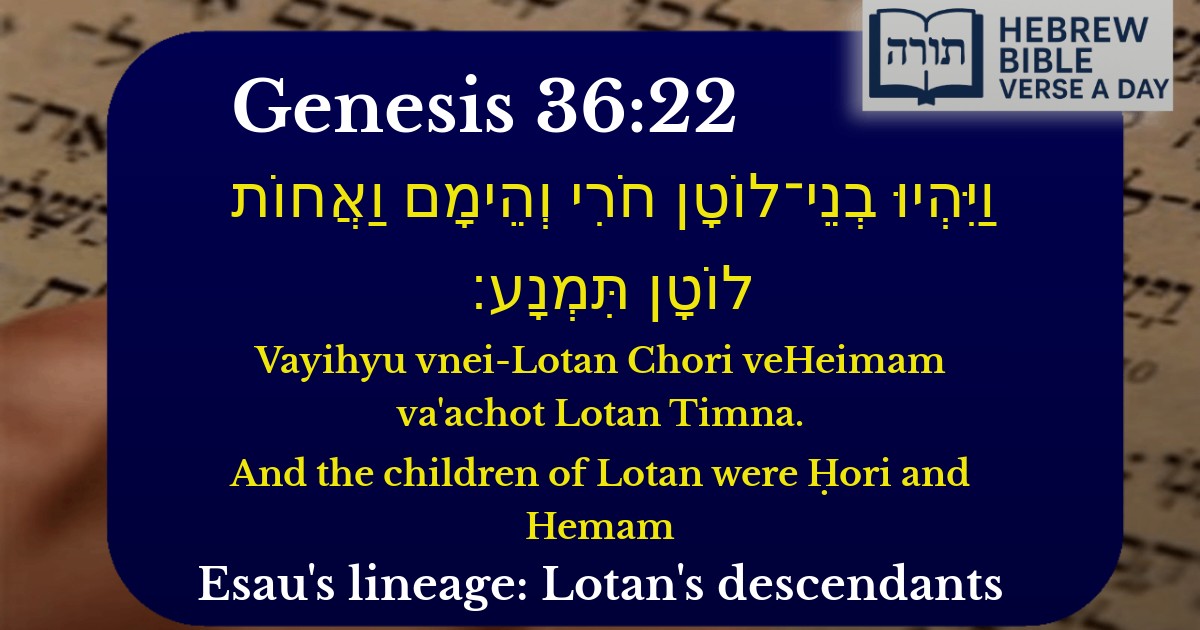Join Our Newsletter To Be Informed When New Videos Are Posted
Join the thousands of fellow Studends who rely on our videos to learn how to read the bible in Hebrew for free!
Hebrew Text
וַיִּהְיוּ בְנֵי־לוֹטָן חֹרִי וְהֵימָם וַאֲחוֹת לוֹטָן תִּמְנָע׃
English Translation
And the children of Lotan were Ḥori and Hemam
Transliteration
Vayihyu vnei-Lotan Chori veHeimam va'achot Lotan Timna.
Hebrew Leining Text
וַיִּהְי֥וּ בְנֵי־לוֹטָ֖ן חֹרִ֣י וְהֵימָ֑ם וַאֲח֥וֹת לוֹטָ֖ן תִּמְנָֽע׃


Verse Analysis: Lotan's Descendants
The verse (Genesis 36:22) lists the children of Lotan, son of Seir the Horite, as Ḥori and Hemam, and mentions their sister Timna. This genealogy appears in the context of the Edomite lineages, detailing the descendants of Esau's brother-in-law.
Rashi's Commentary
Rashi (Rabbi Shlomo Yitzchaki) explains that the name Ḥori indicates a connection to the Horites, the cave-dwelling inhabitants of Seir. He notes that Hemam is alternatively called "Homam" in 1 Chronicles 1:39, suggesting a scribal variation. Regarding Timna, Rashi cites Midrashic sources (e.g., Bereishit Rabbah 82:14) that identify her as a concubine of Eliphaz, Esau's son, and mother of Amalek—highlighting her significance in the lineage of Israel's adversaries.
Midrashic Insights
Halachic and Ethical Implications
The Talmud (Avodah Zarah 2b) derives from Timna's story that rejection of sincere converts—even those with impure motives—can have far-reaching consequences. This aligns with the principle of darchei noam (pleasant ways) in engaging with outsiders (Mishlei 3:17).
Literary Context
Ibn Ezra observes that such genealogies, though seemingly peripheral, establish historical and geopolitical contexts for later conflicts (e.g., Israel's encounters with Amalek and Edom). The inclusion of Timna—a female figure—in a patriarchal list also signals her pivotal role in the narrative.